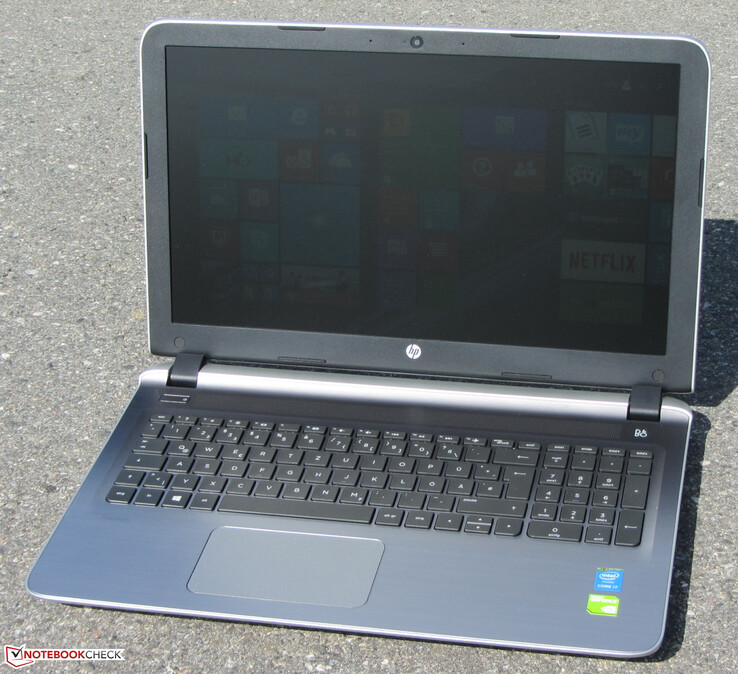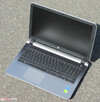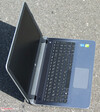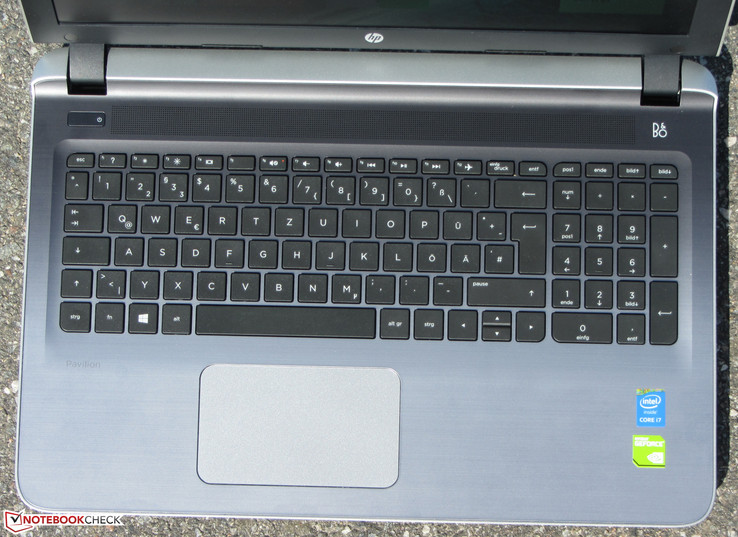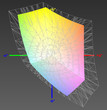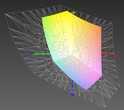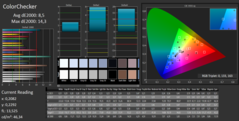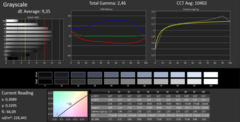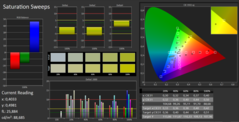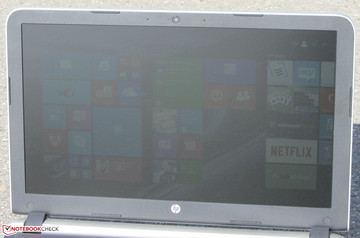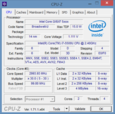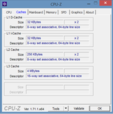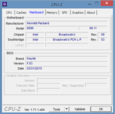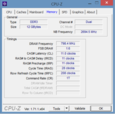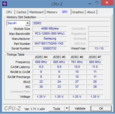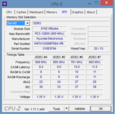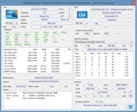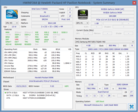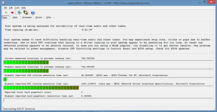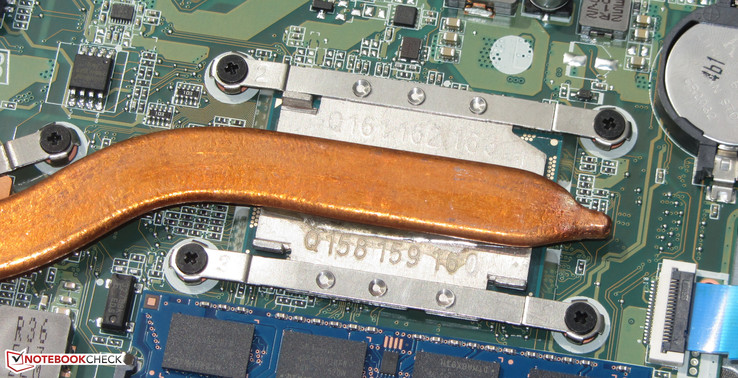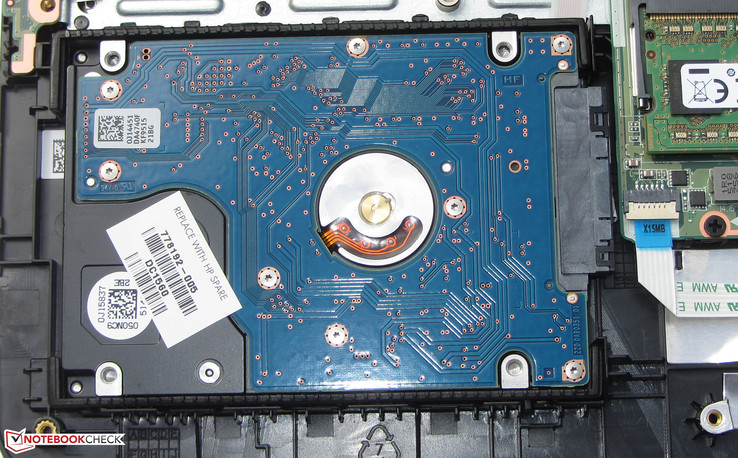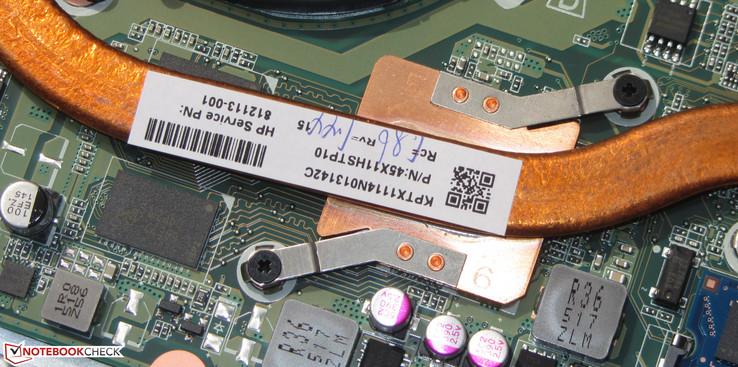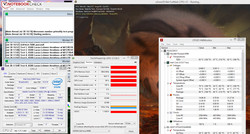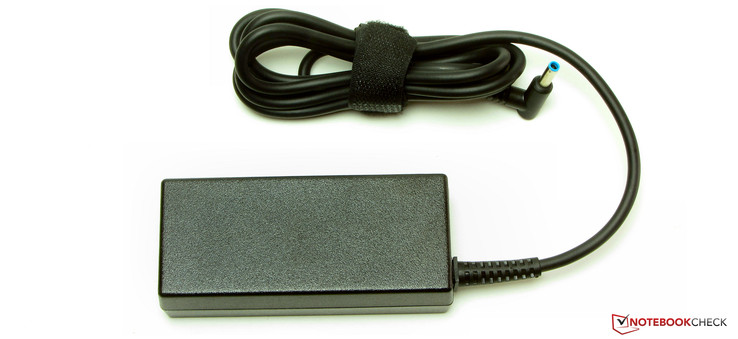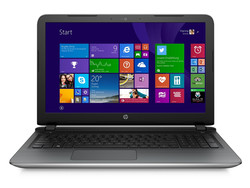HP Pavilion 15 Notebook Review

For the original German review, see here.
Hewlett Packard offers a multitude of laptops in the most different price and performance categories for home use within its Pavilion 15 lineup. We have tested many members of the range, and now we are facing a model from the new Pavilion 15 generation. The Pavilion 15-ab022ng is a gaming suitable all-rounder. Its looks have not been modified much, but the latest Intel and Nvidia technologies are inside our review sample.
There are plenty of rivals, such as the just recently tested Acer Aspire V3-574G, Toshiba Satellite S50-B or Lenovo Z50-70.
Case
The Pavilion's basic casing design has not changed compared with its precursors. Differences are found in details. The casing of our present review sample is also completely made of plastic. HP calls the laptop's color "Natural Silver," which is found on the lid's back and base tray. The wrist rest also features this color but gradually shifts to dark charcoal black toward the hinges. Furthermore, HP tries to convey the impression of brushed metal on the base unit's upper side. The most obvious modifications compared with the former Pavilion models are found above the keyboard. This area is now slightly more angular, and the speakers' openings are punched directly in the upper tray.
Major production flaws were not discovered. HP does not show any great shortcomings in stability, either. The casing can be dented slightly on both sides of the keyboard and below the touchpad - but we see this behavior in most laptops. The base unit's torsional stiffness is still satisfactory. The lid can be warped more strongly, and the screen displays image distortions when pressing the lid's back. The hinges keep the lid firmly in position but rock marginally. Opening the lid is possible with a bit of finger adroitness.
Connectivity
The Pavilion has the diversity of interfaces in common with its precursor. HP only installs a video-out (HDMI). Two of the three USB ports support the USB 3.0 standard. The interface positioning has been improved. They are now mostly in the rear area of both sides, which leaves the areas beside the wrist rest free of cables.
Communication
HP relies on a Wi-Fi module from Realtek (RTL8723BE). It supports the 802.1 b/g/n Wi-Fi standards and also provides Bluetooth 4.0 functionality. The connection between the router and laptop was always stable within a 15-meter radius. The Ethernet chip also comes from Realtek. HP only treats the Pavilion to a Fast Ethernet chip. That is beyond comprehension seeing that Gigabit Ethernet is standard nowadays. After all, other manufacturers can also equip their devices accordingly.
Accessories
The Pavilion is shipped with the usual accessories: A quick-start poster and warranty information.
Operating System
The Windows 8.1 (64-bit) operating system is preloaded. A recovery DVD is not included for the laptop. The Pavilion can be upgraded to Windows 10 free of charge. Positive: Users can install Windows 7 should they dislike Windows 8.1 or Windows 10. HP provides the needed drivers.
Maintenance
HP does not exactly make it easy for users to maintain/upgrade their Pavilion - there is no maintenance hatch, making it necessary to open the casing. The optical drive has to be removed before releasing all screws on the underside. Studying the hardware manual is advisable because some screws are hidden under flaps. The laptop is then turned right way up again, and the upper tray can be released from the base tray. That is quite easy to do with a putty knife. After that, the laptop is placed on its lid and the base tray can be removed. The base tray must be removed this way since the hard drive might fall out otherwise. The Pavilion features two working memory banks, which are both filled. The hard drive can be replaced without problems.
Warranty
The Pavilion comes with a one-year warranty. The warranty period can be extended, for example, with a three-year warranty for approximately 100 Euros (~$111).
Input Devices
Keyboard
The keyboard has not been modified compared with the precursor, either. The Pavilion is shipped with an unlit chiclet keyboard. The flat, lightly roughened keys have a short drop and clear pressure point. However, their resistance could be a bit crisper in our opinion. The keyboard at most yields marginally while typing, which does not have an adverse impact. HP delivers a keyboard that is absolutely sufficient for home use in total.
Touchpad
The Pavilion's multitouch ClickPad has a surface area of approximately 11 x 6.5 cm and thus offers enough room for gesture control. The various multitouch gestures can be turned on and off singly in the pad's configuration menu. The pad's sleek surface facilitates gliding with the fingers. The pad has a short drop and clear pressure point.
Display
HP installs a matte, 15.6-inch screen in its Pavilion. It has a native resolution of 1920x1080 pixels. The screen's rates are disappointing. Its brightness of 215 cd/m² and contrast of 293:1 would already be difficult to accept in a 500-Euro (~$558) laptop and are downright unacceptable in an 800-Euro (~$893) device like the Pavilion. We would have expected absolute minimum rates of 250 cd/m² (brightness) and 500:1 (contrast).
| |||||||||||||||||||||||||
Brightness Distribution: 83 %
Center on Battery: 181 cd/m²
Contrast: 293:1 (Black: 0.76 cd/m²)
ΔE ColorChecker Calman: 8.5 | ∀{0.5-29.43 Ø4.78}
ΔE Greyscale Calman: 9.35 | ∀{0.09-98 Ø5}
66% sRGB (Argyll 1.6.3 3D)
42% AdobeRGB 1998 (Argyll 1.6.3 3D)
45.57% AdobeRGB 1998 (Argyll 3D)
66.4% sRGB (Argyll 3D)
44.11% Display P3 (Argyll 3D)
Gamma: 2.46
CCT: 10402 K
The Pavilion's screen cannot reproduce either the sRGB or the AdobeRGB color spaces. The coverage rates are 66% (sRGB) and 42% (AdobeRGB). The screen has a DeltaE shift of 8.5 in delivery state. A rate less than 3 would be desirable. Furthermore, the screen exhibits a bluish tint.
HP's Pavilion has a viewing-angle dependent TN screen, which cannot be read from every position. Changing the vertical viewing angle quickly leads to image distortions. The angle is more generous horizontally, and even several viewers can look at the screen simultaneously. The Pavilion is not really suitable for outdoor use. The screen's brightness is reduced in battery mode. Consequently, it can at most be used in shadowy environments.
| HP Pavilion 15-ab022ng TN LED, 1920x1080 | Acer Aspire V3-574G-59MA IPS, 1920x1080 | HP Pavilion 15-p008ng TN LED, 1920x1080 | Toshiba Satellite S50-B-12U TN, 1366x768 | Asus N551JK-CN166H IPS, 1920x1080 | Lenovo IdeaPad Z50-70 (59427656) TN LED, 1920x1080 | Lenovo IdeaPad Z50-75 1366x768 | |
|---|---|---|---|---|---|---|---|
| Display | -10% | 10% | -10% | 50% | -18% | -8% | |
| Display P3 Coverage (%) | 44.11 | 39.83 -10% | 48.78 11% | 39.83 -10% | 67.3 53% | 36.2 -18% | 40.67 -8% |
| sRGB Coverage (%) | 66.4 | 59.5 -10% | 71.3 7% | 59.9 -10% | 96.7 46% | 53.8 -19% | 61.2 -8% |
| AdobeRGB 1998 Coverage (%) | 45.57 | 41.21 -10% | 50.4 11% | 41.15 -10% | 69.4 52% | 37.48 -18% | 42.02 -8% |
| Screen | 20% | 6% | 8% | 55% | 8% | 9% | |
| Brightness middle (cd/m²) | 223 | 257 15% | 343 54% | 203 -9% | 323 45% | 202 -9% | 225 1% |
| Brightness (cd/m²) | 215 | 247 15% | 329 53% | 208 -3% | 312 45% | 192 -11% | 224 4% |
| Brightness Distribution (%) | 83 | 84 1% | 87 5% | 88 6% | 83 0% | 78 -6% | 89 7% |
| Black Level * (cd/m²) | 0.76 | 0.45 41% | 1.02 -34% | 0.41 46% | 0.38 50% | 0.37 51% | 0.42 45% |
| Contrast (:1) | 293 | 571 95% | 336 15% | 495 69% | 850 190% | 546 86% | 536 83% |
| Colorchecker dE 2000 * | 8.5 | 7.36 13% | 10.9 -28% | 9.93 -17% | 7.4 13% | 10.23 -20% | 11.59 -36% |
| Greyscale dE 2000 * | 9.35 | 7.82 16% | 12.09 -29% | 10.84 -16% | 6.24 33% | 10.04 -7% | 11.86 -27% |
| Gamma | 2.46 89% | 2.4 92% | 2.01 109% | 2.24 98% | 2.98 74% | 2.2 100% | 2.3 96% |
| CCT | 10402 62% | 6939 94% | 10388 63% | 11605 56% | 8098 80% | 10347 63% | 14580 45% |
| Color Space (Percent of AdobeRGB 1998) (%) | 42 | 38 -10% | 46.1 10% | 38 -10% | 69 64% | 35 -17% | 39 -7% |
| Color Space (Percent of sRGB) (%) | 66 | 59.2 -10% | |||||
| Total Average (Program / Settings) | 5% /
12% | 8% /
7% | -1% /
3% | 53% /
54% | -5% /
1% | 1% /
4% |
* ... smaller is better
Performance
The Pavilion is a member of the 15.6-inch all-round laptops. It has enough computing power for all common application scenarios and can render computer games. Our review sample is available for approximately 800 Euros (~$893). HP will also release multiple configuration alternatives onto the market within this Pavilion 15 lineup - both with Intel as well as AMD innards. We, for example, found the Pavilion 15-ab052ng at test time. It sports AMD's A10-8700P APU and a Radeon R7 M360 graphics core at a price of 500 Euros (~$558).
Processor
HP installs Intel's Core i7-5500U dual-core processor (Broadwell) in the Pavilion. It is one of the strongest models among the frugal ULV processors. It has more than enough computing power for everyday use and should satisfy most users. The CPU clocks at a base speed of 2.4 GHz, which can be boosted to 2.9 GHz (both cores) and 3 GHz (one core) via Turbo. The CPU cannot fully utilize its Turbo in multithread applications and runs at 2.7 to 2.8 GHz. Single-thread applications are performed at 2.9 to 3 GHz. The behavior is identical in both AC and battery modes.
The Broadwell processor scores up to 15% better than its Haswell precursors - the Core i7-4500U and Core i7-4510U - in the tests we performed. That is owed to the somewhat higher operating speeds and improved Broadwell architecture.
| Cinebench R10 | |
| Rendering Multiple CPUs 32Bit (sort by value) | |
| HP Pavilion 15-ab022ng | |
| Acer Aspire V3-574G-59MA | |
| Gigabyte P15F v2 | |
| Asus N551JK-CN166H | |
| Toshiba Satellite L50-B-1TD | |
| Lenovo IdeaPad Z50-75 | |
| Lenovo IdeaPad Z50-75 | |
| Rendering Single 32Bit (sort by value) | |
| HP Pavilion 15-ab022ng | |
| Acer Aspire V3-574G-59MA | |
| Gigabyte P15F v2 | |
| Asus N551JK-CN166H | |
| Toshiba Satellite L50-B-1TD | |
| Lenovo IdeaPad Z50-75 | |
| Lenovo IdeaPad Z50-75 | |
| Geekbench 3 | |
| 32 Bit Single-Core Score (sort by value) | |
| HP Pavilion 15-ab022ng | |
| Acer Aspire V3-574G-59MA | |
| HP Pavilion 15-p008ng | |
| Gigabyte P15F v2 | |
| Toshiba Satellite L50-B-1TD | |
| Lenovo IdeaPad Z50-75 | |
| Lenovo IdeaPad Z50-75 | |
| 32 Bit Multi-Core Score (sort by value) | |
| HP Pavilion 15-ab022ng | |
| Acer Aspire V3-574G-59MA | |
| HP Pavilion 15-p008ng | |
| Gigabyte P15F v2 | |
| Toshiba Satellite L50-B-1TD | |
| Lenovo IdeaPad Z50-75 | |
| Lenovo IdeaPad Z50-75 | |
| Sunspider - 1.0 Total Score (sort by value) | |
| HP Pavilion 15-ab022ng | |
| Acer Aspire V3-574G-59MA | |
| Gigabyte P15F v2 | |
| Asus N551JK-CN166H | |
| Toshiba Satellite L50-B-1TD | |
| Mozilla Kraken 1.1 - Total (sort by value) | |
| HP Pavilion 15-ab022ng | |
| Acer Aspire V3-574G-59MA | |
| Gigabyte P15F v2 | |
| Asus N551JK-CN166H | |
| Toshiba Satellite L50-B-1TD | |
| Octane V2 - Total Score (sort by value) | |
| HP Pavilion 15-ab022ng | |
| Acer Aspire V3-574G-59MA | |
| Gigabyte P15F v2 | |
| Asus N551JK-CN166H | |
| Toshiba Satellite L50-B-1TD | |
| Peacekeeper - --- (sort by value) | |
| HP Pavilion 15-ab022ng | |
| Acer Aspire V3-574G-59MA | |
| Gigabyte P15F v2 | |
| Toshiba Satellite L50-B-1TD | |
* ... smaller is better
System Performance
The system's overall performance is beyond reproach; it runs smoothly. The PCMark benchmark scores are very good. A look at our comparison chart shows that the Pavilion does not have any disadvantages compared with laptops based on a quad-core processor. Consequently, a laptop with a ULV processor is normally the better choice for home use because these models consume less power and produce less waste heat. Quad-core processors should be preferred when CPU-driven applications and programs optimized for several cores are to be executed. The Pavilion's system performance can be improved by replacing the installed hard drive with a solid state drive.
| PCMark 7 Score | 2937 points | |
| PCMark 8 Home Score Accelerated v2 | 3069 points | |
| PCMark 8 Creative Score Accelerated v2 | 3464 points | |
| PCMark 8 Work Score Accelerated v2 | 3903 points | |
Help | ||
| PCMark 7 - Score (sort by value) | |
| HP Pavilion 15-ab022ng | |
| Acer Aspire V3-574G-59MA | |
| HP Pavilion 15-p008ng | |
| Toshiba Satellite S50-B-12U | |
| Asus N551JK-CN166H | |
| Lenovo IdeaPad Z50-70 (59427656) | |
| Lenovo IdeaPad Z50-75 | |
Storage Device
The 1 TB hard drive (5400 revolutions per minute) provides plenty of storage capacity. The user has approximately 800 GB of the capacity available. The recovery partition and Windows installation reserve the remaining storage. CrystalDiskMark records a read speed of 93.43 MB/s. HD Tune delivers an average transfer rate of 76.8 MB/s. The rates are all still within a normal range for 5400 rpm hard drives, although they could be slightly higher.
Graphics Card
A GeForce 940M mid-range graphics core has found its way into the Pavilion. In conjunction with the also present HD Graphics 5500, it creates a graphics-switching solution (Optimus). Nvidia's core is enabled in performance-demanding applications like computer games. Intel's GPU is responsible for everyday use and battery mode. Switching between both cores is automatic; the user does not have to intervene.
The 3DMark scores of the GeForce cores are just slightly higher than those of its precursor, the GeForce 840M GPU. The reason is soon discovered: The 940 core clocks at slightly higher maximum speeds (1124 MHz vs. 1176 MHz). Both GPUs are based on Nvidia's Maxwell architecture, making GeForce 840M laptops a less expensive alternative.
| 3DMark 11 Performance | 2437 points | |
| 3DMark Ice Storm Standard Score | 49599 points | |
| 3DMark Cloud Gate Standard Score | 6512 points | |
| 3DMark Fire Strike Score | 1391 points | |
Help | ||
Gaming Performance
Most computer games can be played using the HD resolution (1366x768 pixels) with medium to sometimes higher quality settings. Compromises in resolution/quality level have to be made in smash hits like Assassin's Creed Unity or The Witcher. Playable frame rates cannot be achieved otherwise. The graphics core installed in the Pavilion is generally too weak for the game Batman: Arkham Knight. The screen's native resolution (Full HD) is only possible with a few titles. Again true: The lower the hardware requirements of a game the sooner the Full HD resolution can be used.
Our comparison chart shows that the Pavilion only manages slightly higher frame rates than comparable GeForce 840M laptops. Therefore, a lot of money can be saved with the corresponding laptop. For example, a former model of our present review sample might be an alternative - the Pavilion 15-p110ng (Core i5-4210U, GeForce 840M, matte Full HD screen). The laptop currently costs approximately 530 Euros (~$591).
| low | med. | high | ultra | |
|---|---|---|---|---|
| Tomb Raider (2013) | 129.1 | 61.6 | 34 | 16.7 |
| Dirt Rally (2015) | 187 | 45.8 | 23.7 | 12.5 |
| Batman: Arkham Knight (2015) | 20 | 18 | 14 | 8 |
Emissions
System Noise
The fan uninterruptedly spins in idle mode. The quiet noise is audible but not unduly distracting. An HP specific BIOS option is also responsible for the permanently spinning fan in the Pavilion. The fan is sometimes inactive when the option "Fan Always On" is disabled. The fan really gets active under load. We measure a noise level of 52.5 dB during the stress test. This level is too high for a laptop from this performance category.
Noise level
| Idle |
| 34.5 / 34.5 / 34.5 dB(A) |
| DVD |
| 38.2 / dB(A) |
| Load |
| 44.1 / 52.5 dB(A) |
 | ||
30 dB silent 40 dB(A) audible 50 dB(A) loud |
||
min: | ||
| HP Pavilion 15-ab022ng 5500U, GeForce 940M | Acer Aspire V3-574G-59MA 5200U, GeForce 940M | HP Pavilion 15-p008ng 4210U, GeForce 840M | Toshiba Satellite S50-B-12U 4210U, Radeon R7 M260 | Asus N551JK-CN166H 4200H, GeForce GTX 850M | Lenovo IdeaPad Z50-70 (59427656) 4510U, GeForce 840M | Lenovo IdeaPad Z50-75 A8-7100, Radeon R6 M255DX | |
|---|---|---|---|---|---|---|---|
| Noise | 7% | 10% | 10% | 7% | 17% | 12% | |
| Idle Minimum * (dB) | 34.5 | 32.8 5% | 31.4 9% | 31.7 8% | 32.1 7% | 30 13% | 32.4 6% |
| Idle Average * (dB) | 34.5 | 32.8 5% | 31.5 9% | 32.5 6% | 32.9 5% | 30.4 12% | 32.9 5% |
| Idle Maximum * (dB) | 34.5 | 32.8 5% | 32.1 7% | 33.1 4% | 33.7 2% | 31 10% | 33.1 4% |
| Load Average * (dB) | 44.1 | 42.7 3% | 41.5 6% | 37.2 16% | 42 5% | 35 21% | 37 16% |
| Load Maximum * (dB) | 52.5 | 43.4 17% | 43.6 17% | 43.6 17% | 44.8 15% | 38.4 27% | 36.4 31% |
* ... smaller is better
Temperature
The Pavilion performed our stress test (Prime95 and Furmark run for at least one hour) in a similar manner in both AC and battery modes. The graphics core always ran stably at 1163 MHz. The processor ran the test at 2.3 to 2.5 GHz in AC mode. This speed range was also reached in battery mode, but the CPU was abruptly throttled to 500 MHz time and again. Although the CPU and GPU clocked at almost full speed, the laptop's temperatures were very moderate. We measured a maximum temperature of 40.2 °C. The fan's high speed during load pays off here. The low temperatures, however, also prove that a more conservative fan management would also cool the laptop sufficiently.
(+) The maximum temperature on the upper side is 38.7 °C / 102 F, compared to the average of 36.9 °C / 98 F, ranging from 21.1 to 71 °C for the class Multimedia.
(±) The bottom heats up to a maximum of 40.2 °C / 104 F, compared to the average of 39.2 °C / 103 F
(+) In idle usage, the average temperature for the upper side is 27.7 °C / 82 F, compared to the device average of 31.3 °C / 88 F.
(+) The palmrests and touchpad are cooler than skin temperature with a maximum of 31.2 °C / 88.2 F and are therefore cool to the touch.
(-) The average temperature of the palmrest area of similar devices was 28.7 °C / 83.7 F (-2.5 °C / -4.5 F).
| HP Pavilion 15-ab022ng 5500U, GeForce 940M | Acer Aspire V3-574G-59MA 5200U, GeForce 940M | HP Pavilion 15-p008ng 4210U, GeForce 840M | Toshiba Satellite S50-B-12U 4210U, Radeon R7 M260 | Asus N551JK-CN166H 4200H, GeForce GTX 850M | Lenovo IdeaPad Z50-70 (59427656) 4510U, GeForce 840M | Lenovo IdeaPad Z50-75 A8-7100, Radeon R6 M255DX | |
|---|---|---|---|---|---|---|---|
| Heat | -24% | 0% | -6% | 6% | -8% | 2% | |
| Maximum Upper Side * (°C) | 38.7 | 50 -29% | 39.6 -2% | 40.3 -4% | 39.4 -2% | 44.9 -16% | 39.5 -2% |
| Maximum Bottom * (°C) | 40.2 | 62.7 -56% | 42.2 -5% | 57.1 -42% | 37.6 6% | 44.5 -11% | 40 -0% |
| Idle Upper Side * (°C) | 30.8 | 34.6 -12% | 29.6 4% | 26.8 13% | 28.7 7% | 31.5 -2% | 28.6 7% |
| Idle Bottom * (°C) | 30.4 | 29.5 3% | 29.4 3% | 27 11% | 26.1 14% | 31.3 -3% | 29.7 2% |
* ... smaller is better
Speakers
The speakers have been modified in the new Pavilion model. Unlike previous models, equipped with a system from Beats Audio, a system from Bang & Olufsen is now installed. The reason: Apple bought Beats Audio. The speakers of the new Pavilion model are still installed above the keyboard under a perforated cover. Differences to the former speakers cannot be established. The speakers produce a decent sound that lacks bass. It is possible to listen to them even for extended periods of time.

Energy Management
Power Consumption
The Pavilion's idle consumption remained below 10 watts, as we are used to from ULV laptops. The requirement climbed up to 61.1 watts during the stress test (Prime95 and Furmark run for at least one hour). This rate is still acceptable and is on par with that of comparable laptops. We recorded rates of around 42.5 watts (+/- 5 watts) in gaming routine. The power supply has a nominal output of 65 watts.
| Off / Standby | |
| Idle | |
| Load |
|
Key:
min: | |
| HP Pavilion 15-ab022ng 5500U, GeForce 940M | Acer Aspire V3-574G-59MA 5200U, GeForce 940M | HP Pavilion 15-p008ng 4210U, GeForce 840M | Toshiba Satellite S50-B-12U 4210U, Radeon R7 M260 | Asus N551JK-CN166H 4200H, GeForce GTX 850M | Lenovo IdeaPad Z50-70 (59427656) 4510U, GeForce 840M | Lenovo IdeaPad Z50-75 A8-7100, Radeon R6 M255DX | |
|---|---|---|---|---|---|---|---|
| Power Consumption | 4% | -2% | 8% | -65% | 6% | -12% | |
| Idle Minimum * (Watt) | 4.8 | 3.9 19% | 4.7 2% | 4.5 6% | 8.6 -79% | 3.6 25% | 6.8 -42% |
| Idle Average * (Watt) | 8.1 | 7.2 11% | 9.1 -12% | 6.7 17% | 12 -48% | 6.4 21% | 9.6 -19% |
| Idle Maximum * (Watt) | 8.3 | 8.5 -2% | 9.7 -17% | 8.4 -1% | 13 -57% | 10 -20% | 11.4 -37% |
| Load Average * (Watt) | 42.5 | 47.5 -12% | 41.4 3% | 40.2 5% | 72.2 -70% | 38.8 9% | 41.6 2% |
| Load Maximum * (Watt) | 61.1 | 58.9 4% | 53.3 13% | 52.1 15% | 104 -70% | 64.4 -5% | 38.6 37% |
* ... smaller is better
Battery Runtime
The Pavilion achieves an idle runtime of 9:23 hours. Acer's Aspire V3-574G (11:13 h) rival lasts longer. Idle mode is checked using Battery Eater's Reader's test with minimum screen brightness, enabled energy-saving profile, and disable wireless modules. The Pavilion shuts down after 1:28 hours of load. This looks the same with the Aspire (1:31 h). The load runtime is ascertained with Battery Eater's Classic test; the screen's brightness is set to maximum, the high-performance plan is enabled, and the radio modules are on.
HP's laptop stops our real-world Wi-Fi test after 4:27 hours. The Aspire (4:41 h) can only offer a few minutes more. This test simulates opening websites using the "Balanced" profile, and a screen brightness of approximately 150 cd/m². We test the video playback time by running the short movie Big Buck Bunny (H.264 encoding, 1920x1080 pixels) in a loop. The wireless modules are disabled, and the screen's brightness is set to about 150 cd/m². The Pavilion lasts 4:54 hours; the Aspire (4:31 h) lags behind that.
The Pavilion's battery life is not awe-inspiring - which is also true for the Aspire's times. We have dealt with comparable laptops that display a considerably longer runtime. In total, the Pavilion is roughly on par with the former Pavilion 15-p008ng model.
| HP Pavilion 15-ab022ng 41 Wh | Acer Aspire V3-574G-59MA 37 Wh | HP Pavilion 15-p008ng 41 Wh | Toshiba Satellite S50-B-12U 44 Wh | Asus N551JK-CN166H 56 Wh | Lenovo IdeaPad Z50-70 (59427656) 41 Wh | Lenovo IdeaPad Z50-75 32 Wh | |
|---|---|---|---|---|---|---|---|
| Battery runtime | 4% | 1% | 7% | -18% | 13% | -39% | |
| Reader / Idle (h) | 9.4 | 11.2 19% | 8.7 -7% | 8.2 -13% | 7.3 -22% | 11.2 19% | 5.2 -45% |
| H.264 (h) | 4.9 | 4.5 -8% | 4.8 -2% | 2.3 -53% | |||
| WiFi v1.3 (h) | 4.5 | 4.7 4% | |||||
| Load (h) | 1.5 | 1.5 0% | 1.7 13% | 1.9 27% | 1.3 -13% | 1.6 7% | 1.2 -20% |
| WiFi (h) | 4.8 | 5.1 | 4.5 | 4.7 | 2.6 |
Pros
Cons
Verdict
HP's Pavilion 15-ab022ng provides more than enough everyday computing power in total. Furthermore, the laptop can even render computer games. Owners of this laptop will not soon be lacking storage capacity thanks to the 1 TB hard drive. The laptop runs quietly and barely heats up during normal use. The latter is also true for load. HP has made a major mistake with the screen. It is a viewing-angle dependent TN screen with only poor rates in brightness and contrast. HP demands approximately 800 Euros (~$893) for the Pavilion; we would have at least expected a viewing-angle stable IPS screen at this price.
However, we also have to criticize HP idiosyncrasies that we find in many laptops from the manufacturer. HP only includes a 12-month warranty. That is not acceptable in an 800-Euro (~$893) device, either. The competition from Acer is more progressive here and includes a two-year warranty. Beyond that, the Pavilion also only sports a Fast Ethernet chip. Gigabit Ethernet is today's standard.
Thus, the Pavilion is not free of shortcomings. Buyers who can ignore that fact will find a decent all-rounder.
Finally, we would like to mention the former HP Pavilion 15-p008ng model. It is currently available for approximately 530 Euros (~$592) as the Pavilion 15-p110ng version (Core i5-4210U, GeForce 840M, matte Full HD screen), and is a less expensive alternative. Although it has some shortcomings in common with its successor, they are easier to ignore in view of the considerably lower price.
HP Pavilion 15-ab022ng
- 07/31/2015 v4 (old)
Sascha Mölck




